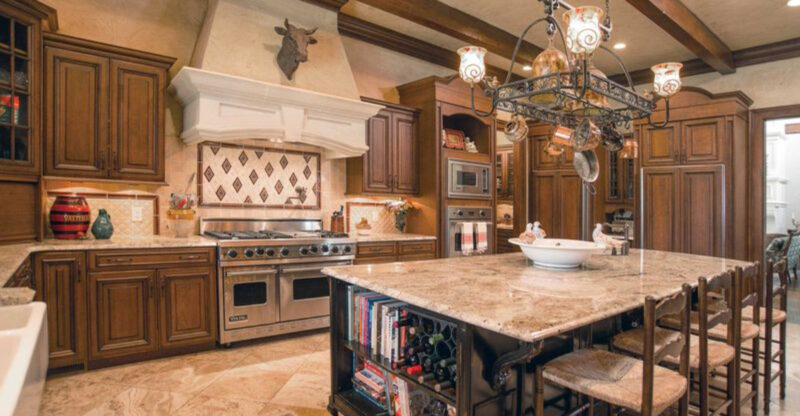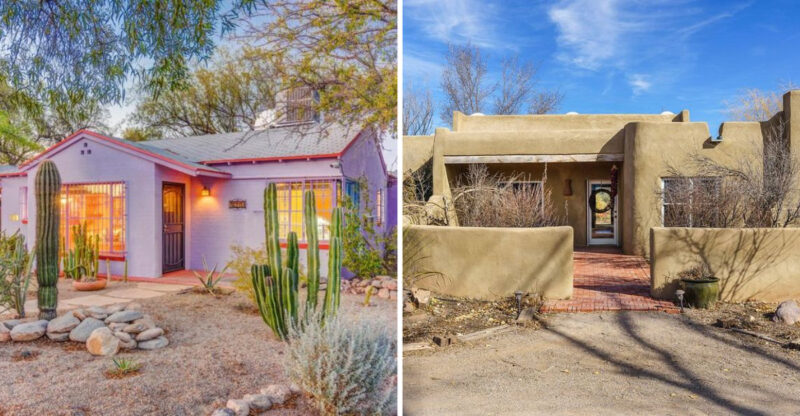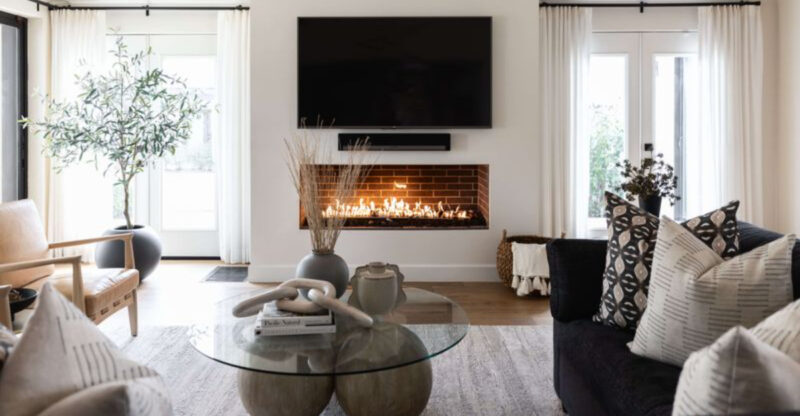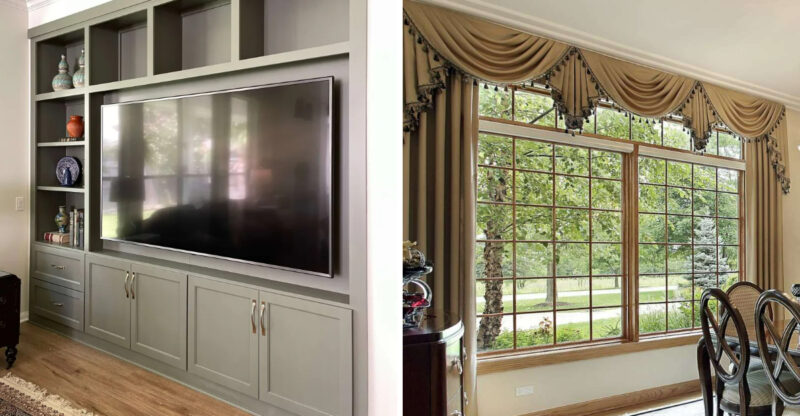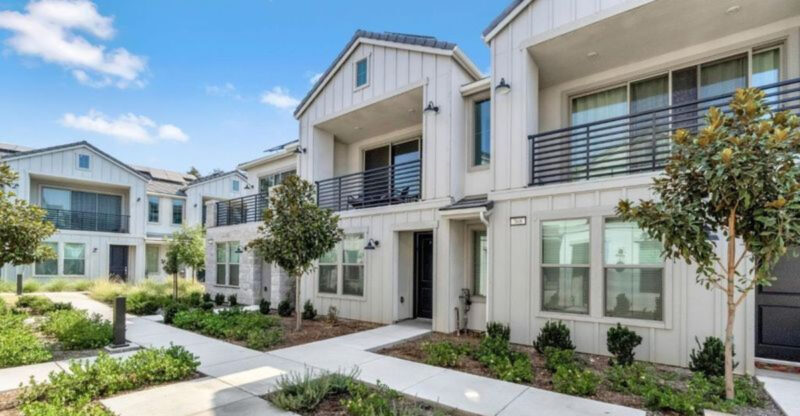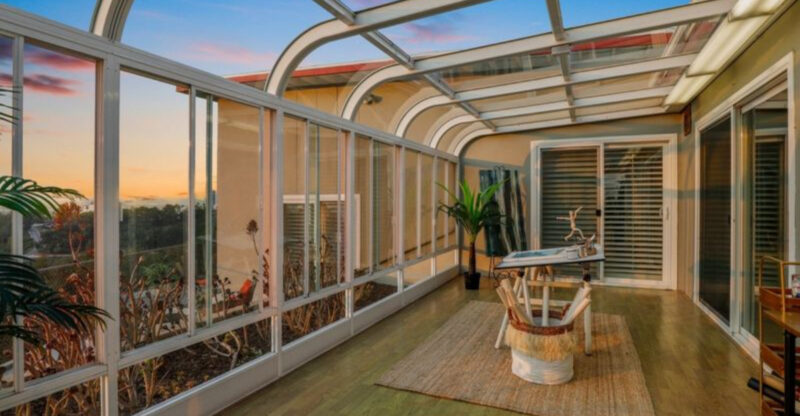Modern Home Elements Buyers Are Moving Away From 17 To Rethink
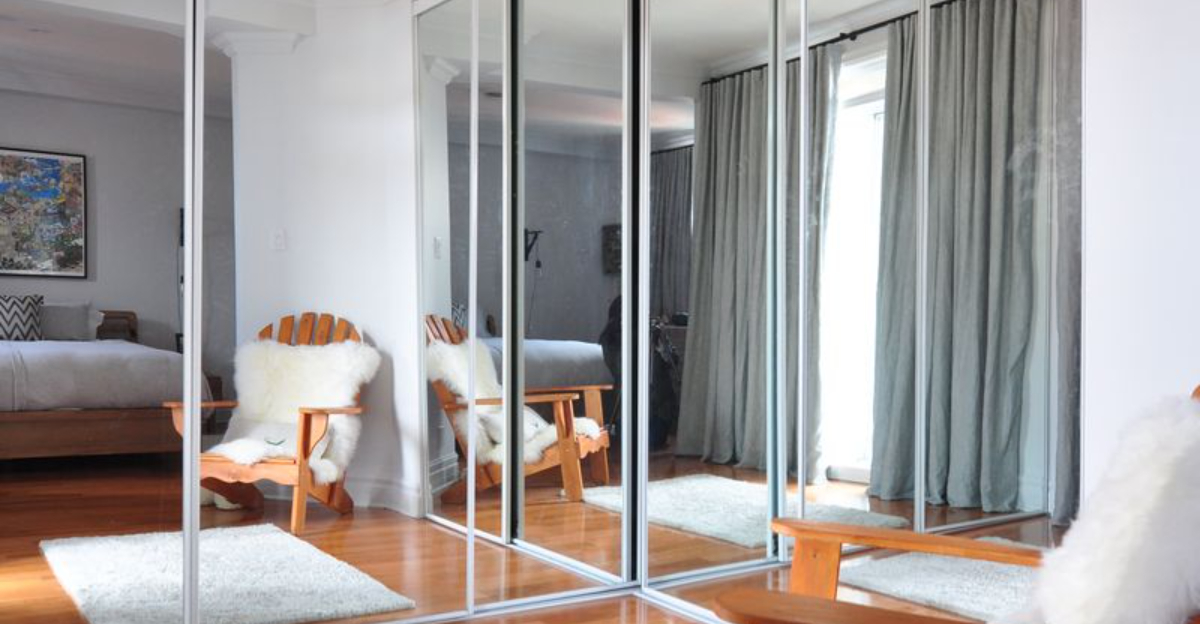
Home design trends come and go faster than we can remodel our spaces! What was hot just a few years ago might now make potential buyers cringe when they walk through your front door.
As homeowners become more practical and focused on sustainable living, many once-popular design choices are quickly falling out of favor.
Let’s explore 17 home elements that buyers are increasingly avoiding and why you might want to reconsider them too.
1. Open-concept layouts with no defined zones
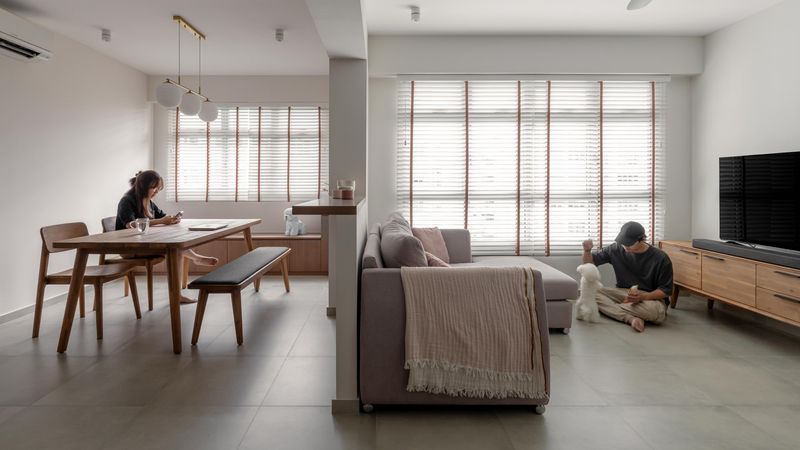
Remember when knocking down every wall was the ultimate goal? Those days are fading fast. Homeowners now crave some separation between living spaces, especially after spending so much time at home during recent years.
Privacy has become a precious commodity. With more people working from home, having dedicated spaces for different activities prevents the chaos of overlapping noise and activities. Nobody wants to hear the dishwasher running during their important Zoom call!
The solution isn’t returning to boxy, closed-off rooms, but rather creating thoughtful divisions using half walls, sliding doors, or strategic furniture placement that maintains flow while defining purpose-driven zones.
2. All-white kitchens with no contrast
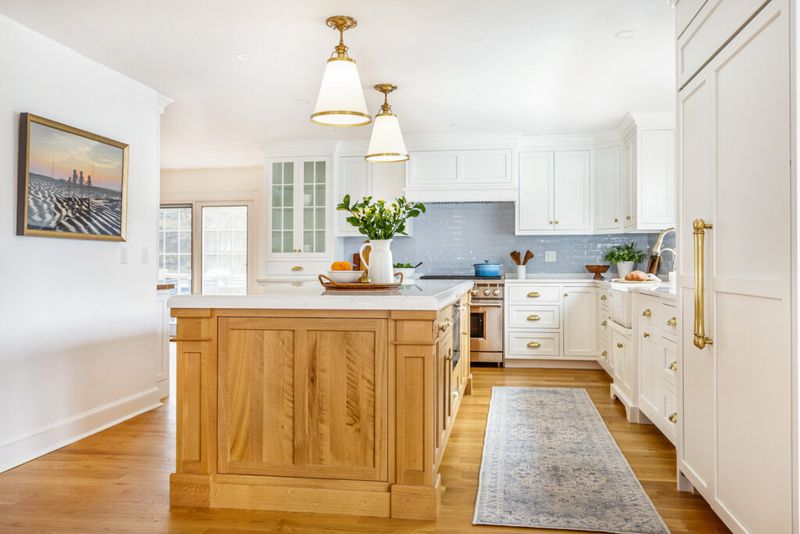
The pristine all-white kitchen had its moment of glory, but buyers are increasingly turning away from this clinical look. White-on-white-on-white kitchens now feel sterile and uninspiring rather than clean and bright.
Maintenance issues play a huge role in this shift. Anyone who’s lived with an all-white kitchen knows the constant battle against visible stains, fingerprints, and the inevitable yellowing that happens over time. It’s simply not practical for real family living.
Today’s kitchens embrace warmer elements through wood tones, colored islands, or two-tone cabinets that add personality while still feeling fresh. Even small touches of contrast through hardware or lighting fixtures can transform a bland white space into something with character.
3. Glossy high-shine cabinet finishes
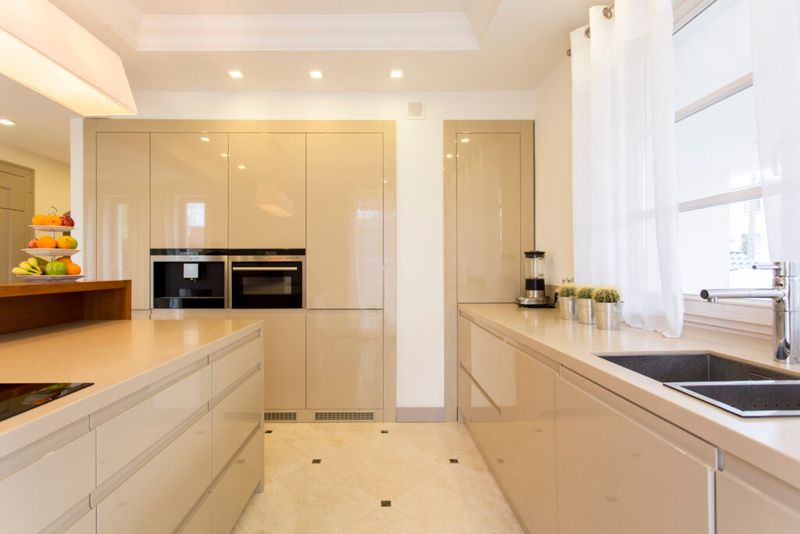
Those ultra-reflective cabinet finishes that once dominated kitchen showrooms are losing their appeal fast. High-gloss cabinets might look impressive in photos, but living with them is another story entirely.
Every fingerprint, smudge, and water droplet becomes immediately visible on these mirror-like surfaces. If you have children or cook regularly, you’ll find yourself constantly wiping down cabinets. The reflective quality can also create uncomfortable glare when natural light hits them at certain angles.
Matte and satin finishes have emerged as the practical alternatives. They offer a sophisticated look that hides imperfections better while providing a more tactile, warm feeling to the heart of your home. These subtler finishes also age more gracefully as trends continue to evolve.
4. Floating vanities without storage
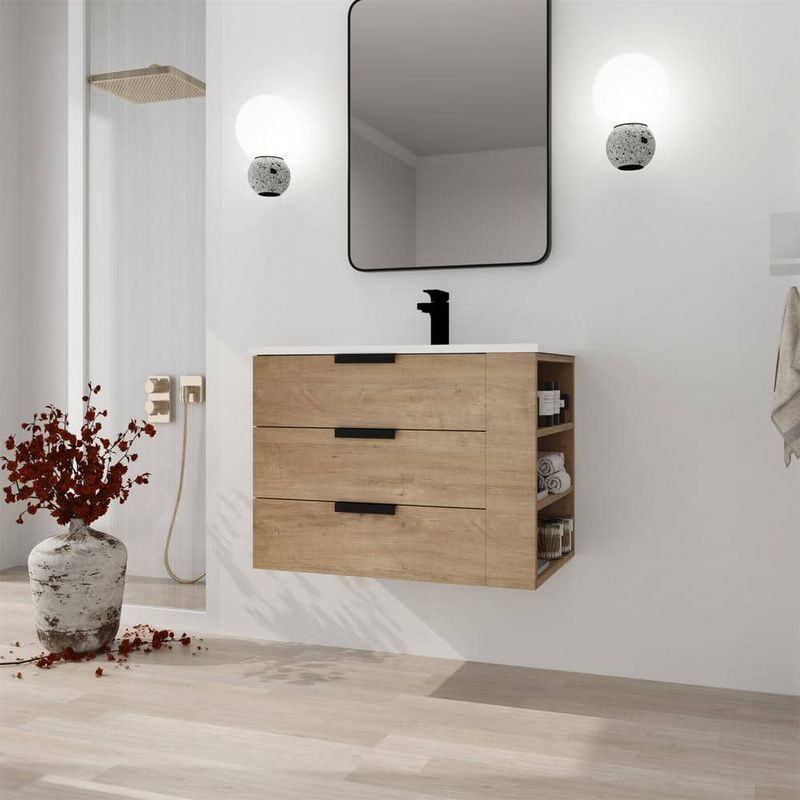
Floating bathroom vanities once represented the pinnacle of minimalist chic. Their wall-mounted design created the illusion of more floor space and delivered that coveted hotel bathroom vibe. Unfortunately, real life requires more practicality.
Where exactly are you supposed to store extra toilet paper, cleaning supplies, or those bulk packs of cotton balls? Without adequate storage, bathrooms quickly become cluttered with items that have nowhere to hide. Most families simply can’t function with such limited storage options.
Smart homeowners are now choosing vanities that offer the best of both worlds perhaps with a slight floating appearance but incorporating drawers or cabinets underneath. This provides the visual lightness while acknowledging that bathroom storage is non-negotiable for most buyers.
5. Over-the-top accent walls
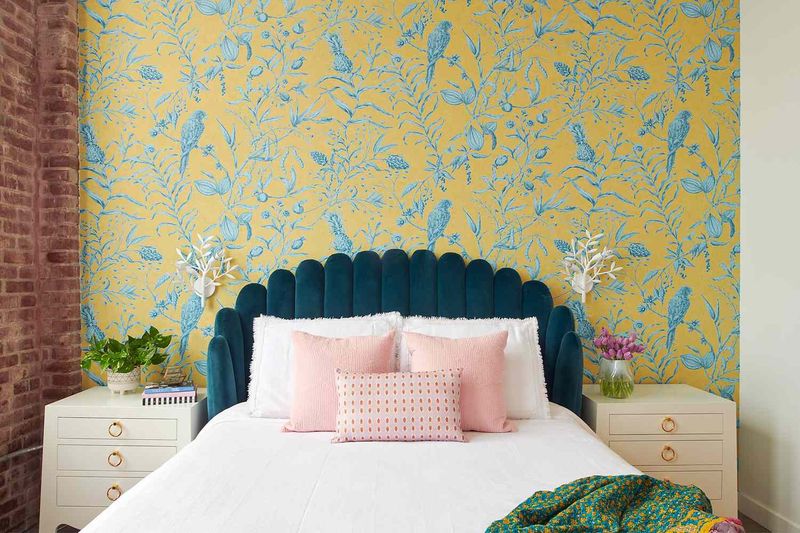
Wild wallpaper, dramatic paint colors, and those ubiquitous reclaimed wood accent walls are quickly becoming dated markers of the 2010s. What felt bold and personal just a few years ago now often looks like a future renovation project to potential buyers.
The issue isn’t accent walls themselves but their execution. Overly trendy patterns or materials that dominate a space can quickly feel overwhelming and age poorly. Many homeowners find themselves tired of living with such strong visual elements after just a year or two.
If you love the accent wall concept, consider subtler approaches textured paint, a slightly deeper shade of your main color, or removable wallpaper that can be easily changed. The goal should be creating interest without commitment to something that might feel dated before you’ve even finished paying for it.
6. Barn doors in every room
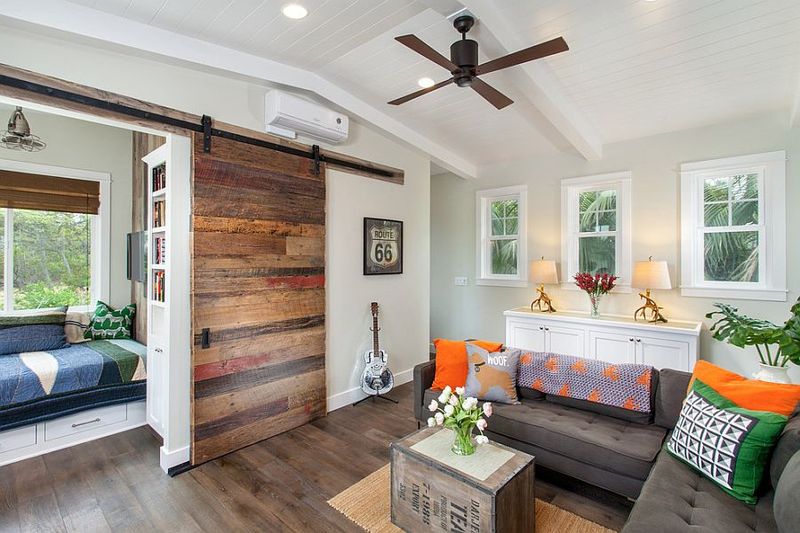
Barn doors exploded onto the home design scene with rustic charm and space-saving promises. However, their practicality issues have finally caught up with their aesthetic appeal. These sliding showpieces offer virtually no sound privacy or true separation between spaces.
Anyone who’s lived with barn doors knows they never fully seal against the wall, leaving gaps that let light, sound, and even smells travel between rooms. This becomes particularly problematic for bathroom doors or home office spaces where privacy matters. The hardware also tends to jump tracks or stick over time.
While they might still work in certain contexts like pantries or closets, buyers increasingly view barn doors in bathrooms or bedrooms as a feature to replace rather than a selling point. For these spaces, pocket doors offer a better alternative if traditional swing doors won’t work.
7. Vessel sinks in bathrooms
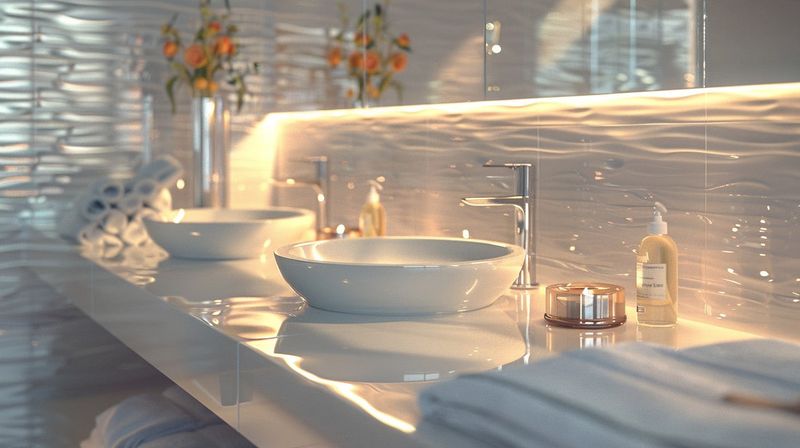
Those bowl-like sinks that sit completely on top of the counter made a dramatic entrance into bathroom design about a decade ago. While they certainly make a statement, vessel sinks have proven to be more form than function in everyday use.
Cleaning around these raised basins becomes a constant challenge as water and toothpaste inevitably splash onto the surrounding counter and into the crevice where sink meets surface. Height can also be an issue they often sit too high for comfortable use, especially for children or shorter adults.
Undermount sinks have emerged as the practical favorite among homebuyers. They offer clean lines, easy counter wiping, and timeless appeal that works with various design styles. If you’re updating a bathroom with resale in mind, this is definitely the way to go.
8. Exposed ductwork in living spaces
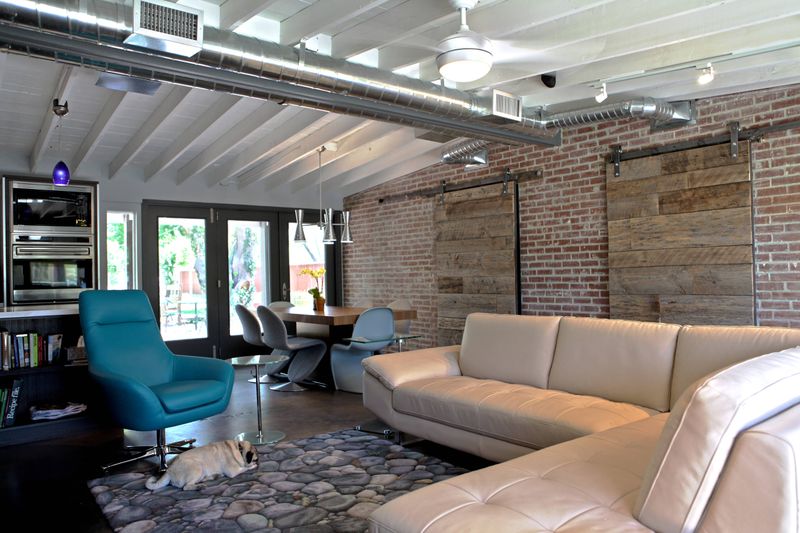
The industrial loft look brought exposed pipes, ducts, and electrical conduits into mainstream homes. What began as an authentic feature of converted warehouses became a forced design element in suburban homes that never needed visible mechanical systems in the first place.
Homeowners have discovered that fake industrial elements collect dust in hard-to-reach places and can make spaces feel unfinished rather than intentional. The novelty wears off quickly when you’re staring at pipes while relaxing in your living room. Heating and cooling efficiency can also suffer when ducts are exposed to unconditioned space.
Instead of full industrial exposure, today’s buyers appreciate thoughtful industrial touches through lighting fixtures, furniture pieces, or select architectural details that add character without going overboard. This creates a more timeless look that won’t feel dated in five years.
9. Integrated refrigerator panels
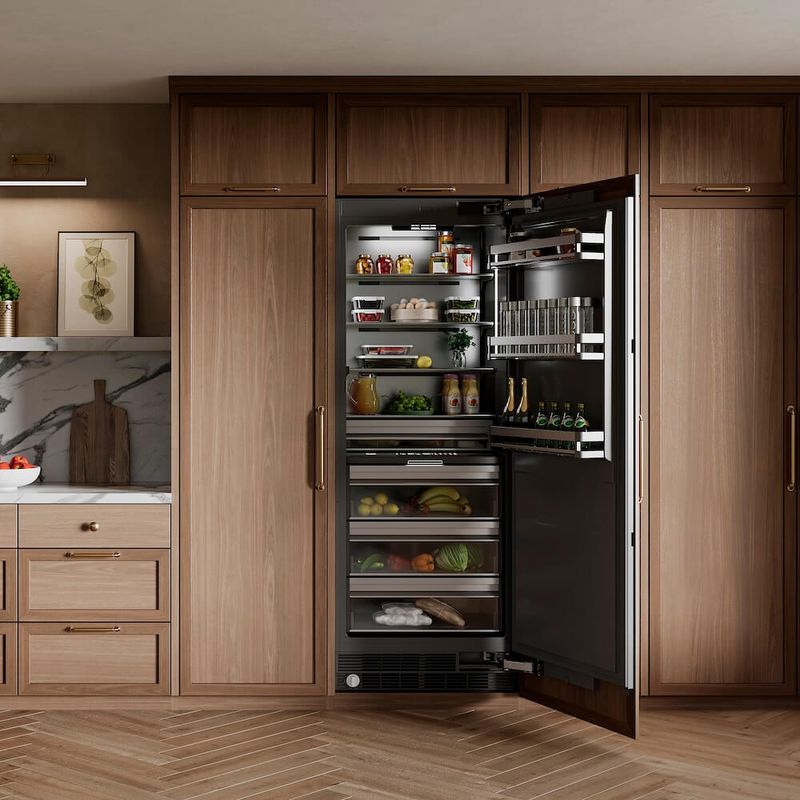
Hidden appliances that blend seamlessly with cabinetry once represented kitchen luxury at its finest. Homeowners spent thousands extra to disguise their refrigerators behind custom panels that matched surrounding cabinets. This trend is cooling off rapidly.
Today’s homebuyers often prefer seeing the refrigerator as a distinct element. Modern stainless steel or matte black appliances are designed to be showcased rather than hidden, with sleek profiles that complement rather than detract from kitchen design. There’s also a practical element finding the refrigerator shouldn’t require a treasure hunt for guests unfamiliar with your kitchen layout.
The cost factor cannot be ignored either. Custom panels add significant expense to already pricey appliances, money that could be invested elsewhere in the home. When replacement time comes, finding exact matches for aging cabinet fronts can become nearly impossible.
10. Popcorn ceilings
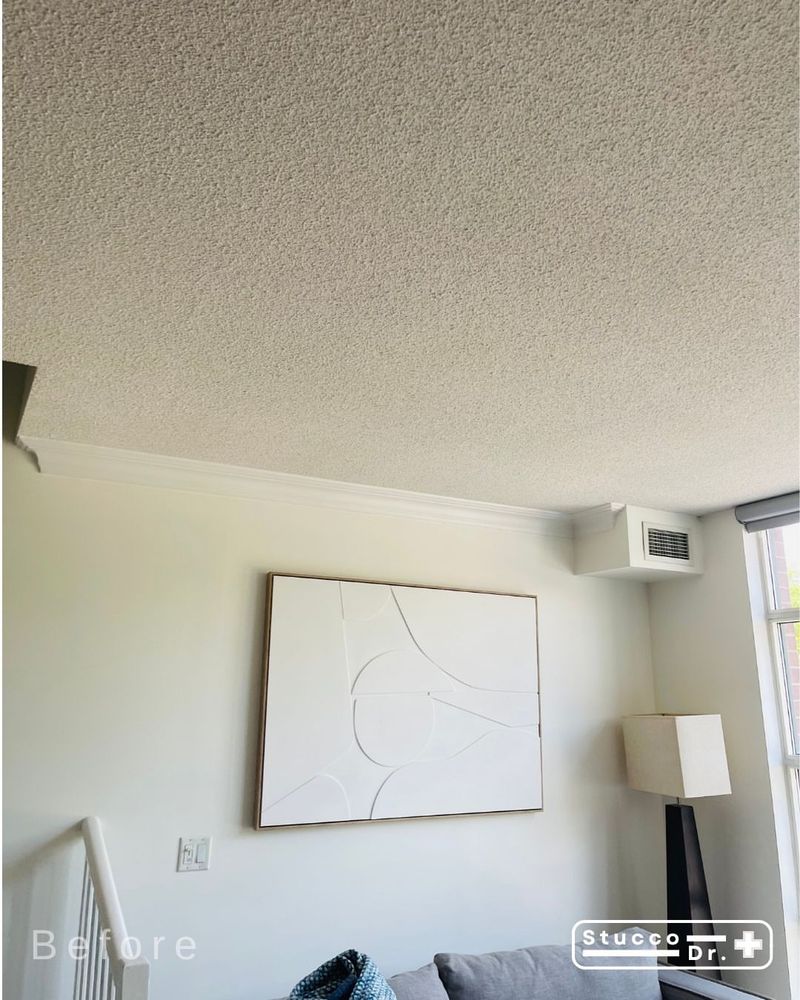
Though popcorn ceilings haven’t been intentionally installed in decades, many homes still sport this outdated texture overhead. Originally popular for hiding imperfections and providing some acoustic benefits, these bumpy surfaces are now immediate renovation targets for most buyers.
Beyond their dated appearance, popcorn ceilings collect dust in all those tiny crevices, making them nearly impossible to clean effectively. Older versions may even contain asbestos, adding health concerns to aesthetic ones. Repairing damaged areas is also challenging patching popcorn texture rarely blends seamlessly with the original application.
If you’re selling a home with popcorn ceilings, know that most buyers will factor removal costs into their offers. For homeowners staying put, removing this texture and replacing it with a smooth finish or subtle alternative like a skip trowel creates an instant update that makes rooms feel taller and more modern.
11. Wall-to-wall carpeting upstairs
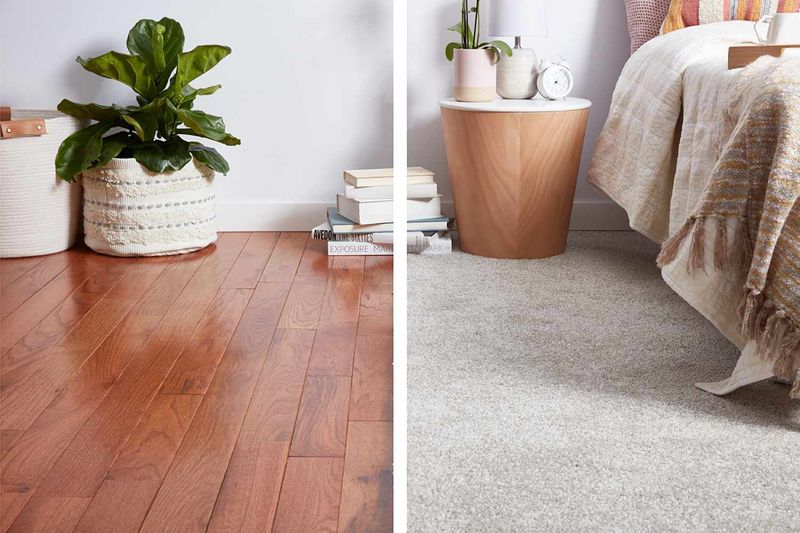
For decades, having carpeted bedrooms and hallways upstairs was the default choice. The softness underfoot and sound-dampening qualities made logical sense for sleeping areas. However, today’s buyers increasingly view wall-to-wall carpeting as a drawback rather than a feature.
Allergies and cleanliness concerns top the list of reasons for this shift. Carpets trap dust, pet dander, and other allergens that are difficult to remove completely even with regular vacuuming. Stains from spills become permanent reminders of accidents, and replacing carpeting in just one room often means visible mismatches with adjoining spaces.
Hardwood or quality laminate flooring with area rugs has become the preferred alternative. This combination offers the warmth and comfort of carpet in specific areas while maintaining easier cleaning and a more updated look that appeals to most modern buyers.
12. Heavy industrial pipe shelving
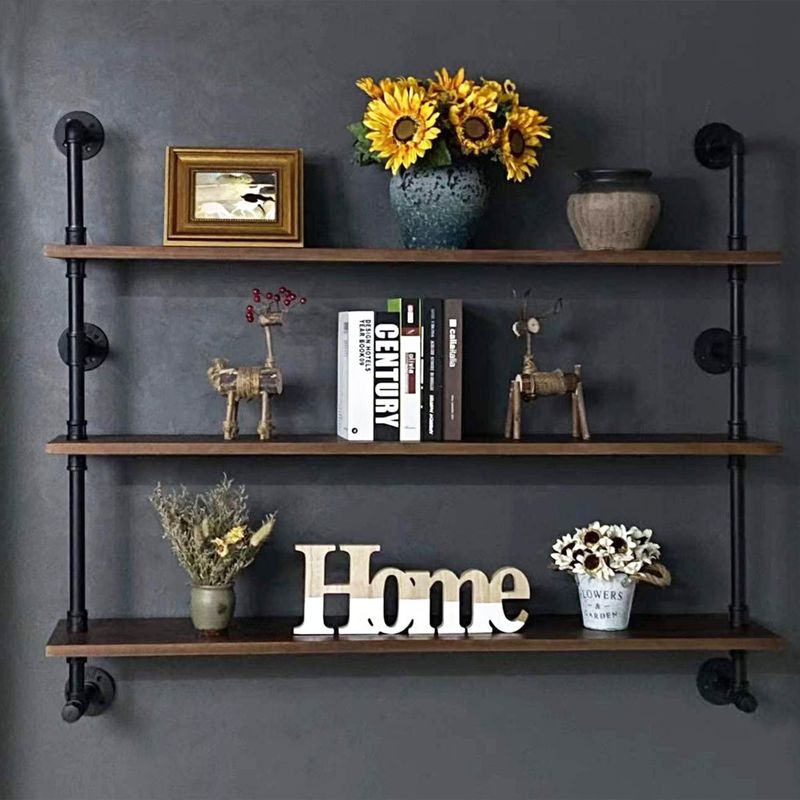
DIY pipe shelving units burst onto the scene as affordable ways to create industrial-chic storage. Made from plumbing pipes and wooden boards, these rustic shelves quickly became the darling of Pinterest and home renovation shows.
The reality of living with these heavy metal fixtures has proven less appealing than their Instagram photos. The pipes are surprisingly expensive when purchased new, extremely heavy on walls, and the threaded connections collect dust in hard-to-clean grooves. Many homeowners find the industrial look too cold and harsh for everyday living spaces.
Floating shelves and more refined bracket systems have taken center stage instead. These options provide similar open storage while feeling lighter visually and physically. Modern shelf designs incorporate warmth through natural materials or sleeker metal finishes that don’t overwhelm the items being displayed.
13. Dark hardwood floors throughout
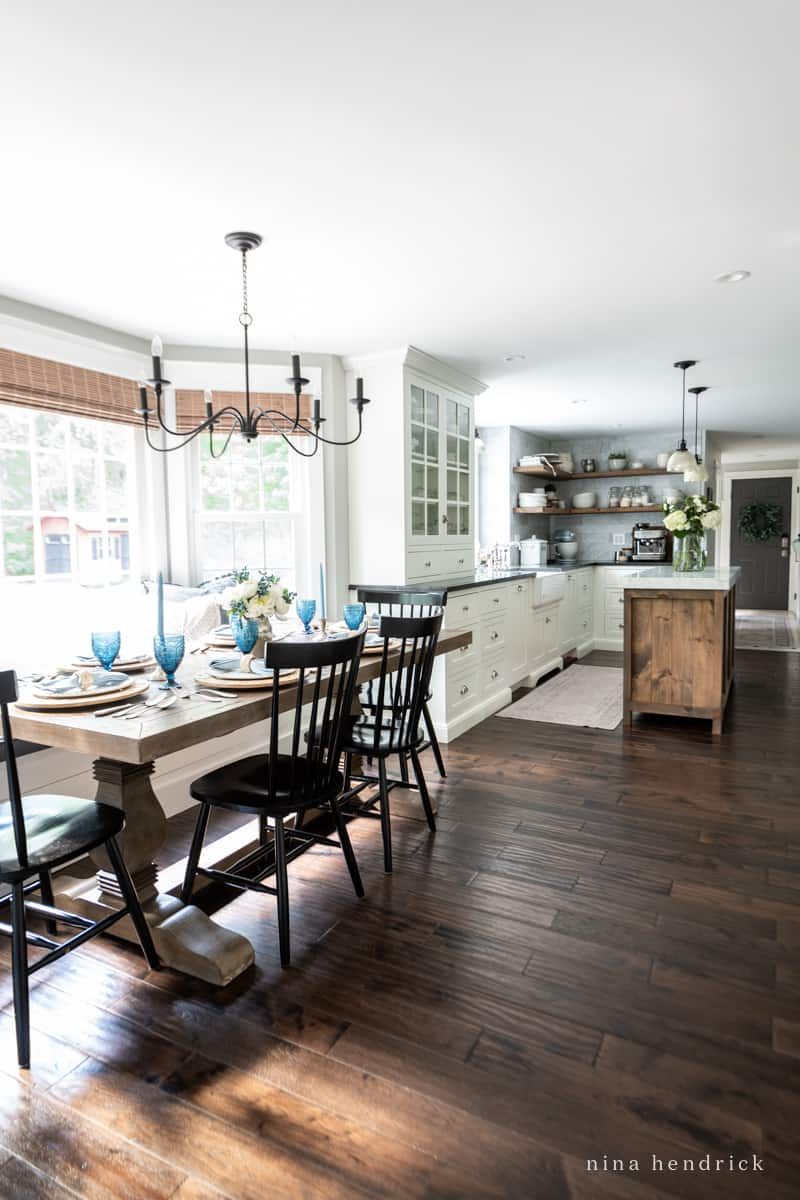
Those deep espresso-colored floors that dominated home design in the early 2000s are rapidly falling from favor. While they once created dramatic contrast with light walls and furniture, homeowners have discovered the practical drawbacks of such dark surfaces.
Every speck of dust, pet hair, and footprint shows dramatically on dark floors, creating a cleaning nightmare. These dark planks also show scratches more visibly than medium or light woods. From a design perspective, dark floors can make spaces feel smaller and more closed-in, especially in rooms with limited natural light.
The trend has shifted toward more natural, middle-tone woods or even lighter finishes that hide everyday wear better. These warmer, more forgiving tones create an airier feeling while still providing the warmth and character of real wood. They also adapt more easily to changing design trends around them.
14. Large fireplaces as focal points
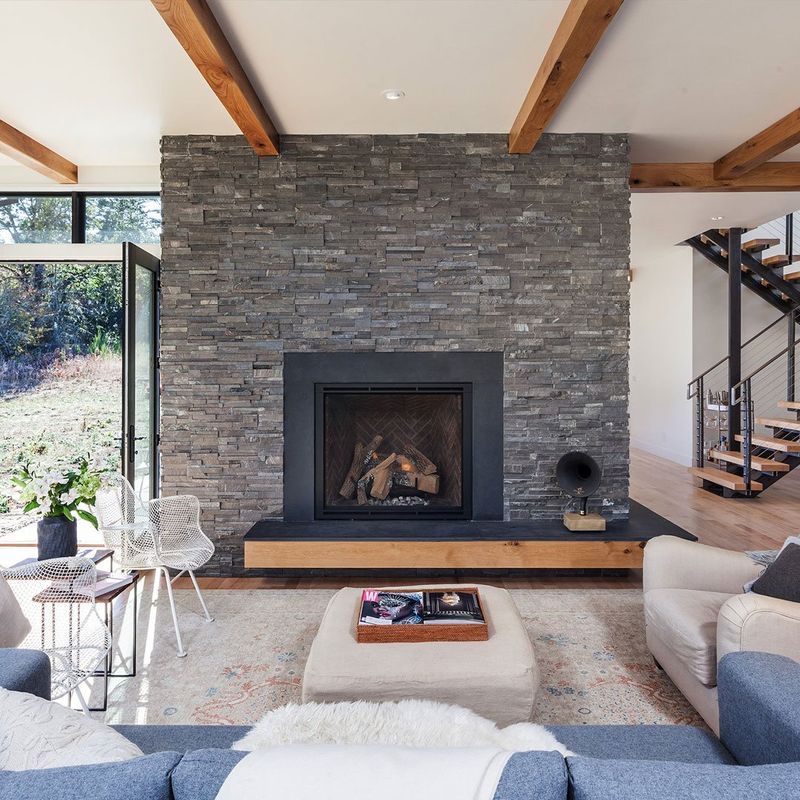
Massive stone fireplaces stretching from floor to ceiling were once the coveted centerpiece of living rooms. These imposing structures, often featuring heavy mantels and extensive stonework, dominated the spaces they occupied both visually and physically.
Homeowners now prefer more balanced room layouts where no single element overwhelms the space. Those towering fireplaces often dictate furniture placement, limit TV mounting options, and can make rooms feel smaller and darker. The permanent nature of these massive structures also makes them expensive to modify if tastes change.
Modern fireplace designs focus on sleeker profiles with clean lines and more modest proportions. Smaller gas inserts or linear fireplaces that provide ambiance without dominating the entire wall have become increasingly popular. These updated options offer the cozy benefits of a fire feature without committing an entire wall to a trend that might feel dated in a decade.
15. Chunky geometric backsplash tiles
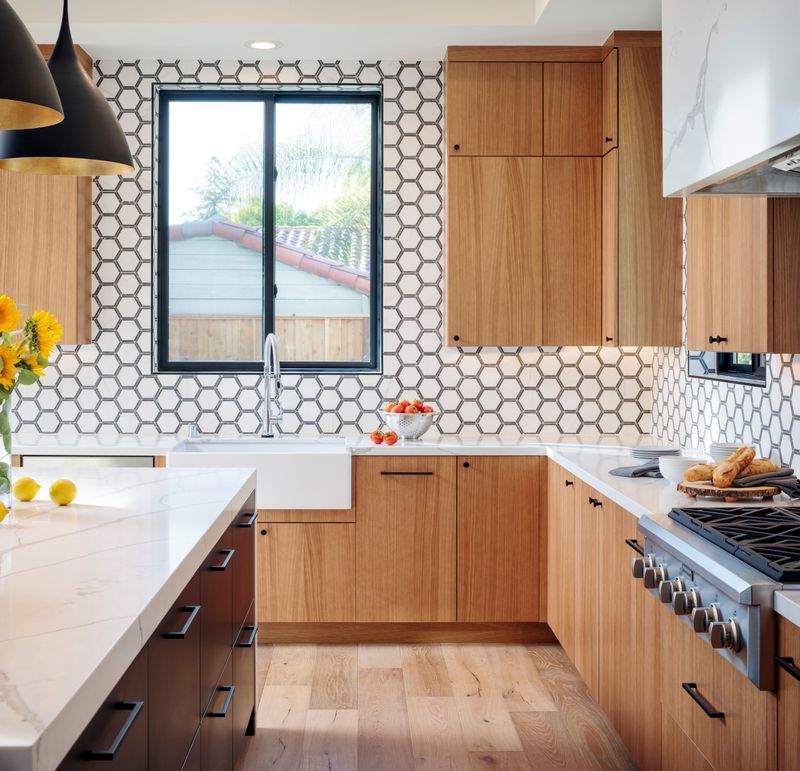
Bold geometric tiles in kitchens and bathrooms made a splashy entrance into home design a few years back. These attention-grabbing patterns with high contrast and busy arrangements certainly made a statement – but that statement quickly became dated.
Heavily patterned tiles tend to visually age faster than simpler designs. What feels fresh and exciting initially can become tiresome to live with day after day. These busy patterns also compete with other design elements in the room, making it difficult to update other aspects without creating visual chaos.
Homeowners are shifting toward more timeless backsplash options with subtle interest – handmade subway tiles with slight variations, larger format tiles with minimal grout lines, or natural stone with inherent pattern variation. These choices provide texture and character without becoming the only thing you notice in the room.
16. Drop-ceiling grid lighting

Those ubiquitous fluorescent panel lights set into suspended grid ceilings once dominated kitchens and bathrooms in countless homes. Their harsh, institutional lighting created unflattering shadows while the visible grid system added an office-like feel to living spaces.
Today’s homeowners prioritize lighting that enhances both the space and the people in it. The flat, shadowless illumination from grid lighting fails to create dimension or highlight architectural features. The recessed panels also become discolored over time and collect dead insects that are visible through the diffusers.
Modern lighting plans layer different types of fixtures recessed can lights for general illumination, pendants for task lighting, and under-cabinet lighting for work surfaces. This thoughtful approach creates a more pleasant atmosphere while allowing for different lighting needs throughout the day. Even in finished basements, more residential-feeling options have replaced the commercial look of drop ceilings.
17. Mirrored closet doors
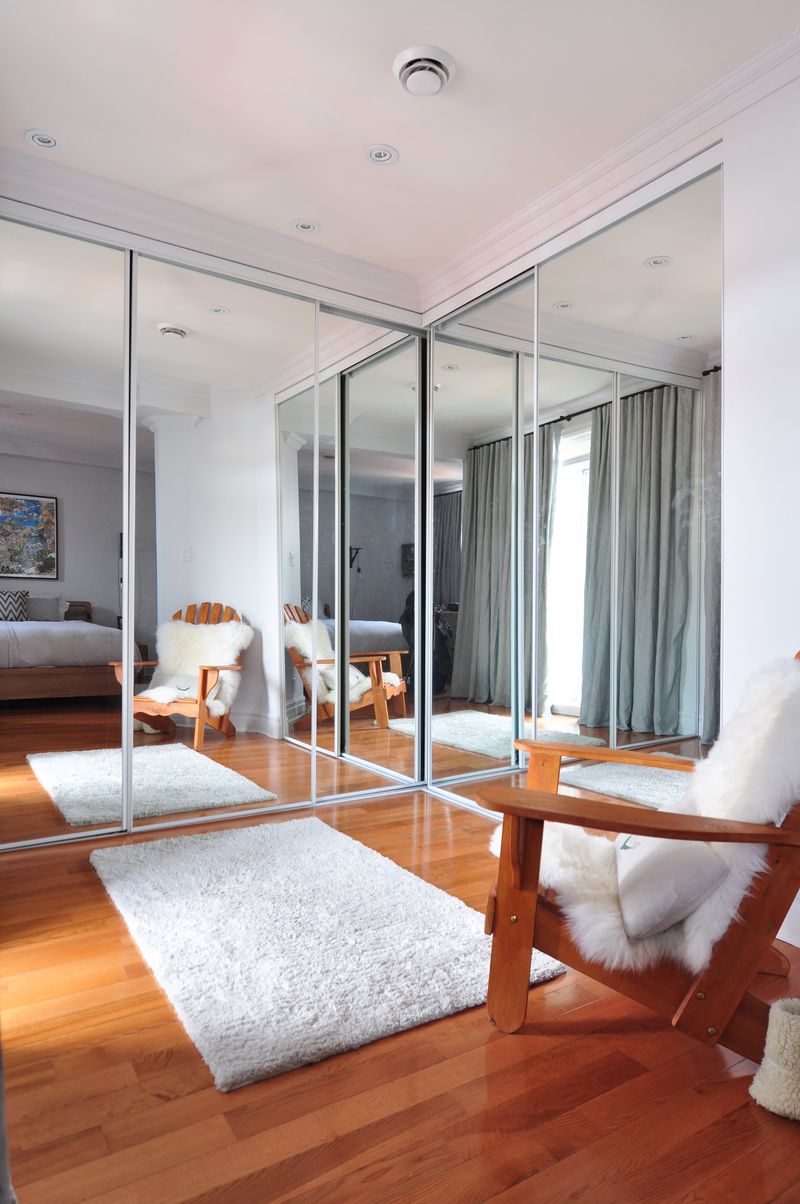
Those wall-to-wall mirrored sliding doors that covered closets in countless bedrooms are quickly sliding out of fashion. While they once seemed like a clever way to make rooms appear larger and brighter, today’s homeowners see them as remnants of 1980s design that never quite stood the test of time.
Beyond their dated appearance, these mirrors often distort reflections due to their sliding installation, creating funhouse-like effects rather than accurate images. The metal tracks collect dust and can become sticky or difficult to slide smoothly. When panels do break or crack, replacing them becomes an expensive hassle.
Contemporary closet doors favor simple panel designs, frosted glass, or even fabric inserts that add texture without the harsh reflective quality. For those who still want mirrors in bedrooms, standalone full-length options or thoughtfully placed wall mirrors provide better functionality without dominating the entire wall.

